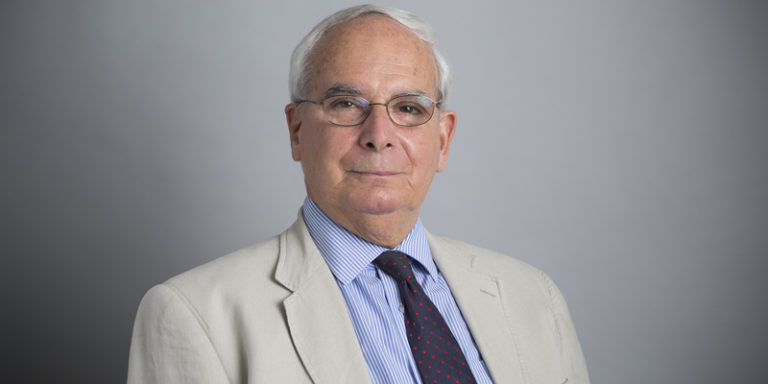R (ETM Contractors Ltd) v Bristol City Council and Esteban Investments Ltd [2024] EWHC 2263 (Admin)
Date: 5 September 2024
Barrister/s: Peter Wadsley
Area/s of law: Public & Administrative Law, Judicial Review, Planning
- Home
- >
- Recent Cases
- >
- R (ETM Contractors Ltd) v Bristol...

Search
Sign up to mailings
To keep up to date with our latest news and events, please sign up for mailings.
You are always free to unsubscribe at any time.
Peter Wadsley acted for Bristol City Council in a judicial review (‘JR’) challenge by ETM to an outline planning permission granted by Bristol to Esteban on 22nd August 2023, for a development at a site known as the Longmoor site consisting, in summary, of phased residential led development, including affordable housing, with commercial and community floorspace.
This was a major development consisting of up to 510 dwellings and up to 5,000 square feet of commercial and community floor space. Linked with that was a development of the Ashton Gate Stadium site known as the Ashton Gate Sporting Quarter. So it was development very important for the City.
This case of R (ETM Contractors Ltd) v Bristol City Council and Esteban Investments Ltd [2024] EWHC 2263 (Admin) raises a number of issues relating to the service of originating process and the likely attitude of the courts if relief is sought against non-compliance with the CPR.
ETM alleged that the grant of permission was unlawful, inter alia, because it said its waste business would be seriously and adversely affected by the grant of residential planning permission close to its site. Bristol and Esteban vigorously disputed this. In the end the case turned, not on the merits of the JR, but the failure to issue the proceedings in time and to effect service on Bristol and Esteban in accordance with the CPR.
There is a very short time limit for the issue of JR proceedings under the Town & Country Planning Acts (6 weeks)[1] and ETM issued proceedings 8 days late. They should have been issued on 3rd October but were not issued until 11th October. Service should have been effected by 18th October but the Council was not served until 27th October and Esteban not until 24th October.
ETM applied for orders under CPR 3.1(2)(a) extending the time limited for filing the claim form; and (2) an order pursuant to CPR 16.5(2) validating the service of the claim form by an alternative means. It did not apply pursuant to CPR 3.1(2)(a) for an order extending the time limited for serving the claim form because of the CA’s decision in n R (Good Law Project) v Secretary of State for Health and Social Care [2022] EWCA Civ 355, a case which, unsurprisingly, featured heavily in argument and Lavender J’s judgment. The judge dismissed ETM’s application under both heads.
The filing of the claim form was left until the afternoon of the last day. It was never explained why this was so. The attempts to file over the next 8 days showed a vast number of emails to and from the court, with the court being unable to access ETM’s documents[2] until finally their solicitors used the Document Upload Centre[3] and the proceedings were successfully issued. Moral: particularly if you have a number of bundles, use the DUC and, in any event, do not wait until the last day in case there are electronic problems!
The judge, applying the principles in R (Thornton Hall Hotel Ltd) v Wirral Metropolitan Borough Council (2019] PTSR 1794 at [21], found:
“79 ….. (2) There is no evidence that Ms Sutherland made, and I infer that she did not make, any effort to consult the relevant provisions of the Practice Directions or the Information for Court Users in order to ascertain how the claim form should be filed.
(3) Although she had used the Document Upload Centre before, she made no attempt to use the Document Upload Centre on this occasion. In accordance with section B of the Information for Court Users, that would have required her to make a request to upload documents to the Document Upload Centre. She made no such request.
(4) She attempted to file the claim form and accompanying documents by way of hyperlinks in an email, whereas paragraphs 2.1 and 3.2 of Practice Direction 5B require documents filed by email to be attached to or included in an email, which clearly excludes hyperlinks.
(5) It may be that Ms Sutherland’s firm’s computer system automatically converted proposed attachments of a certain size to hyperlinks, but it was her responsibility to be aware of her firm’s arrangements for sending documents by email.
(6) Having attempted to file the claim form at 12.50 pm on 3 October 2023, Ms Sutherland was on leave and uncontactable for the remainder of the day, which meant that there was no lawyer available to consider and take action in the light of the court’s email of 1.43 pm.
This conduct on the part of the claimant’s solicitor, he held, fell far short of the “utmost diligence and care” which was required, adopting the words used in paragraph 63 of Carr LJ’s judgment in the Good Law Project case and applying them to the filing as well as the service of the claim form.
He considered the correspondence with the court and the efforts made to file the claim over a period of 7 days but concluded that the solicitors were still at fault [84] and that the prejudice to the public interest and to good administration outweighed any prejudice to the failure of ETM’s challenge to the JR. He therefore refused to extend time for filing the claim.
That being so, the issues of service fell away because of course the claim failed. However, he considered the issue of service and whether an order could be made under CPR CPR 16.5(2) validating the service of the claim form by an alternative means.
The issue turned primarily on whether ETM had taken reasonable steps to serve the claim form. On that he concluded [102-103]:
“It is conceded that reasonable steps were not taken. In particular:
(1) As with the filing of the claim form, there is no evidence that Ms Sutherland made, and I infer that she did not make, any effort to consult the relevant provisions of the CPR or of the Practice Directions in order to ascertain how the claim form should be served.
(2) Ms Sutherland did not ask the council or Clarke Willmott the question which she was required to ask by paragraph 4.2 of Practice Direction 6A before effecting service by email.
(3) Clarke Willmott had stated that its address for service was its postal address. The claimant was not entitled under CPR 6.3(1)(d) and paragraph 4.1 of Practice Direction 6A to serve the claim form on Clarke Willmott by email.
(4) It was accepted that the claimant was entitled to serve the claim form on the council by email, but not by an email sent to Mr Pinney’s email address.
(5) Ms Sutherland’s email contained a hyperlink to the claim bundle which, until some time on 12 October 2023, did not contain the statement of facts and grounds. (It was not argued before me that Ms Sutherland could not properly use a hyperlink, rather than an attachment, when serving the claim from).
(6) Ms Sutherland either did not read, or did not act on, the statement in Mr Baker’s “out of office” email of 11 October 2023 that Clarke Willmott did not accept service of proceedings by email.
The judge concluded that the issues of prejudice, as he had found on the question of extension of time, weighed in favour of Bristol and Esteban. There were other technical and procedural issues in the case which the judge dealt with but these were the main issues. Moral on service of originating process: above all, read carefully the CPR and the Practice Directions which tell you what you have to do to effect service – particularly electronic service. Remember that there is a ‘bright line’ that is drawn between extensions of time for service of originating process and other situations, post-issue and service, where extensions may be asked for (see the Good Law Project case and the CA’s views on this topic).
The decisions in this case and the Good Law Project case may seem harsh particularly where the extension requested, whether for issue of proceedings or service, are only a matter of a few days. It may also seem harsh when, e.g., the originating process has come in time to the attention of the solicitor dealing with the defendant’s case, albeit that the documents were sent to the wrong email address for the purposes of service (see the Good Law Project case on this). But it is clear that the courts are taking at the moment an increasingly strict approach where extensions are requested in relation to originating process. Whether this will continue remains to be seen. The Good Law Project case is bound for the Supreme Court remembering that the decision of the CA in that case was a 2-1 split
PETER WADSLEY
26th September 2024
[1] CPR 54.5(5).
[2] Probably because the solicitors were using hyperlinks on their emails.
[3] See ‘Information for Court Users’, sections A and B.
